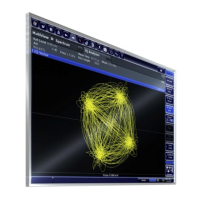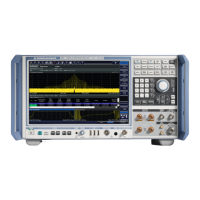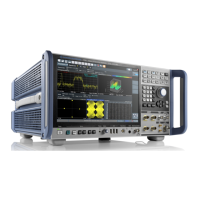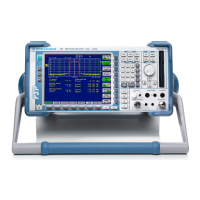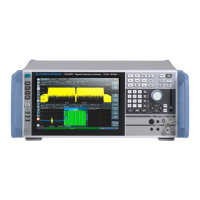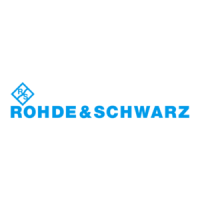
Do you have a question about the Rohde & Schwarz FSWP26 and is the answer not in the manual?
| Frequency Range | 2 Hz to 26.5 GHz |
|---|---|
| Resolution Bandwidth | 1 Hz to 10 MHz |
| Analysis Bandwidth | Up to 2 GHz |
| Input Power Range | -30 dBm to +30 dBm |
| Amplitude Accuracy | ± 0.19 dB |
| Interface | LAN, USB, GPIB |
| Display | touchscreen |
| Weight | Approx. 30 kg |
Provides information specific to the I/Q Analyzer application and I/Q data processing.
Background on terms and principles for I/Q data acquisition.
Functions and settings for import, capture, and analysis of I/Q data.
Basic procedure for performing I/Q Analyzer measurements or capturing data.
Hints and tips for handling errors and optimizing test setup.
Remote commands for configuring and performing I/Q Analyzer measurements.
Step-by-step instructions on how to activate the I/Q Analyzer application.
Explains the different labeled areas of the I/Q Analyzer application's measurement diagram.
Details the settings displayed in the channel bar for the I/Q Analyzer application.
Discusses time and frequency domain measurements using I/Q Analyzer.
Explains processing analog I/Q data from the RF input.
Details how to input I/Q data from files.
Explains receiving and providing trigger signals.
Describes importing and exporting I/Q data.
Explains the basics of Fast Fourier Transformation.
Discusses using the I/Q Analyzer in MSRA operating mode.
Covers measurements in time and frequency domains.
Explains complex baseband data and I/Q components.
Describes how the I/Q Analyzer processes complex data from RF input.
Explains how to extend usable I/Q bandwidth with options.
Lists bandwidth extension options and their required B-options.
Details using an external device as a trigger source.
Explains how the R&S FSWP provides trigger output signals.
Explains windowing in Fourier transformation and its purpose.
Explains automatic and manual RBW modes.
Covers importing and exporting I/Q data for analysis.
Provides an overview of important currently defined settings in the 'Overview'.
Configures the input settings for the I/Q Analyzer.
Configures level characteristics affecting signal amplitude.
Configures frequency characteristics of the input signal.
Configures triggered and gated measurements.
Configures bandwidth settings for data acquisition.
Lists the supported input sources for the I/Q Analyzer.
Configures the RF input source for signals.
Configures reference level and related settings.
Defines an arithmetic level offset added to the measured level.
Automatically determines a reference level for optimal signal-to-noise ratio.
Defines the center frequency of the signal in Hertz.
Selects the trigger source for measurements.
Defines parts of the input signal captured for further evaluation.
Activates all automatic adjustment functions for current measurement settings.
Demonstrates capturing I/Q data and analyzing it in the I/Q Analyzer.
Step-by-step guide to capture baseband I/Q data from RF input.
Adds an additional measurement channel, configurable up to 10 channels.
Activates a new channel or selects an existing channel.
Turns I/Q data analysis on and off.
Changes current channel application to I/Q Analyzer, activating simple data acquisition.
Aborts the current measurement and resets the trigger system.
Retrieves captured I/Q data in a list, with three different formats.
Configures the various input sources for I/Q Analyzer.
Selects the I/Q data file to be used as input for measurements.
Defines the total attenuation for RF input.
Turns the internal preamplifier on and off.
Defines the center frequency.
Initiates measurement to determine and set ideal settings automatically.
Demonstrates configuring and performing basic I/Q data acquisition and analysis.
Details the .iq.tar file format for packing I/Q data and meta information.

